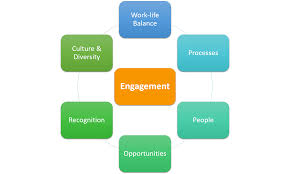
Employees today are seeking more from their work than just a paycheck. They crave engagement, meaning, and enjoyment in their work lives. Businesses recognizing this shift have started to leverage innovative concepts like flow theory and gamification to enhance employee engagement throughout what is often referred to as the “employee engagement funnel,” which encompasses everything from recruitment to retention.
Understanding Flow Theory
Flow theory was introduced by psychologist Mihaly Csikszentmihalyi. It describes a state of intense absorption and enjoyment in an activity. When in flow, individuals experience a deep sense of focus, lose awareness of time, and find the activity intrinsically rewarding. In the workplace, achieving a state of flow can maximize productivity and improve job satisfaction. However, this requires tasks to be well-matched with an employee’s skills — not too difficult to provoke anxiety nor too easy to create boredom.
Applying Flow Theory in the Workplace
To integrate flow into the workplace, employers can design tasks that are challenging yet achievable and provide clear goals and immediate feedback. This means crafting roles around employees’ strengths and providing them with projects that stretch their skills without overwhelming them. Additionally, promoting a culture that values concentration and minimizing disruptions allows employees the uninterrupted time necessary to enter a state of flow.
The Basics of Gamification
Gamification is the application of game-design elements in non-game contexts. It taps into the human propensity for competition, achievement, and rewards. Gamification in the workplace can involve implementing point systems, leaderboards, virtual badges, or challenges to motivate and engage employees.
Implementing Gamification in the Employee Engagement Funnel
Gamification can be particularly effective during onboarding. New hires might engage in a point-based learning system where completing training modules results in accumulating points that unlock certain benefits or recognition. Moreover, it can be utilized for professional development wherein employees earn badges for acquiring new skills or for peer recognition programs where points can be given as a form of praise.
Combining Flow Theory with Gamification
Blending flow theory with gamification creates an environment where employees are deeply engaged while also feeling motivated by external rewards. For instance, if using a project management tool that incorporates gamification techniques like scoring and awards helps workers stay focused on achieving “flow-friendly” tasks that are challenging but within their competency range.
Outcomes of Using Flow Theory and Gamification
Using these strategies has been shown to foster higher levels of engagement and satisfaction among employees which correlates with increased productivity and reduced turnover rates. Staff who regularly experience flow at work often report higher levels of job satisfaction which serves as a key component for long-term retention strategies.
In summary, leveraging flow theory along with gamification within an employee engagement funnel offers a dual approach: it aligns individual passions with job requirements through immersive task engagement while also offering motivational incentives through gamified elements.opoulos
